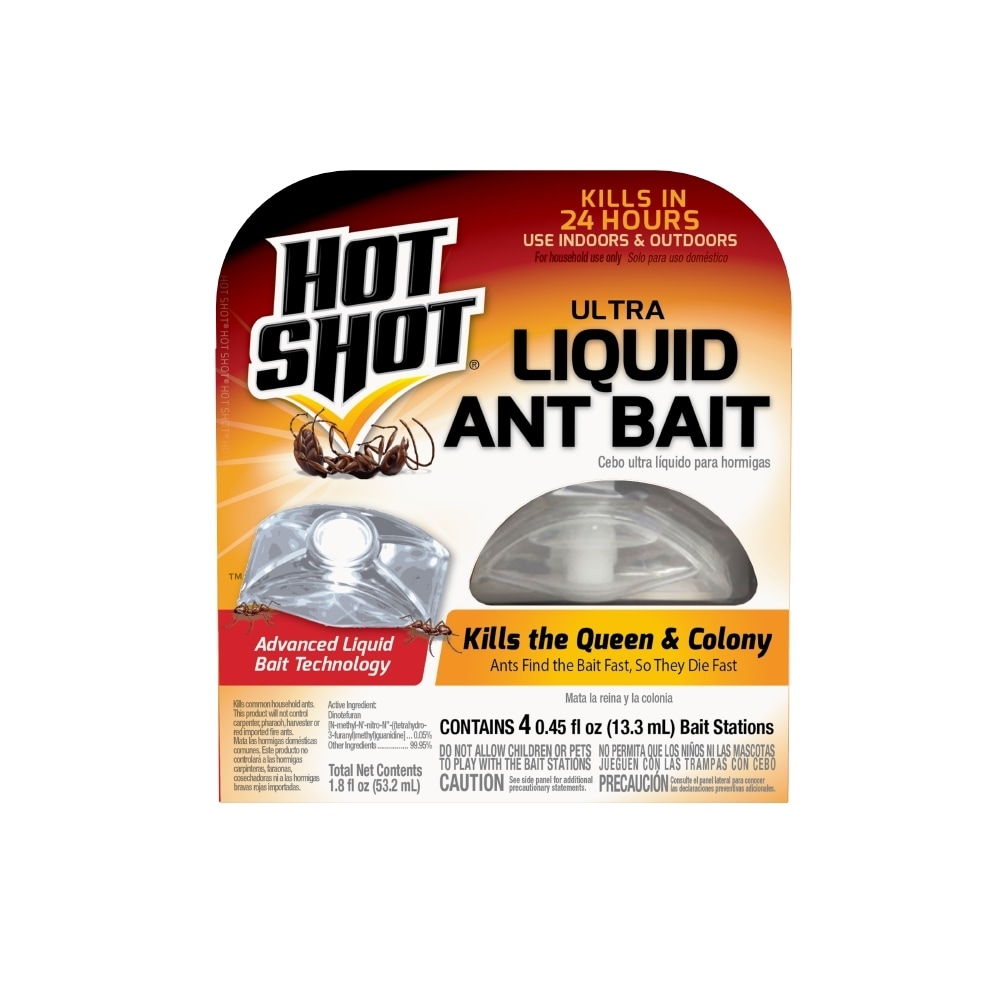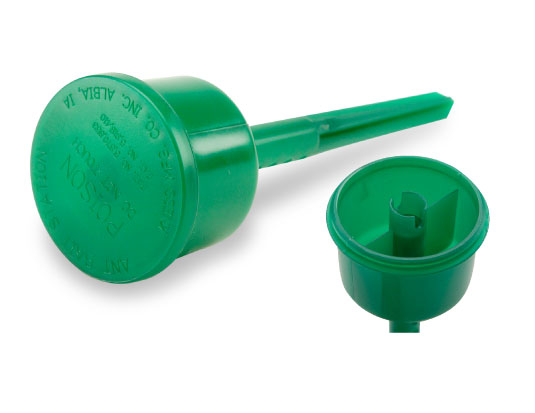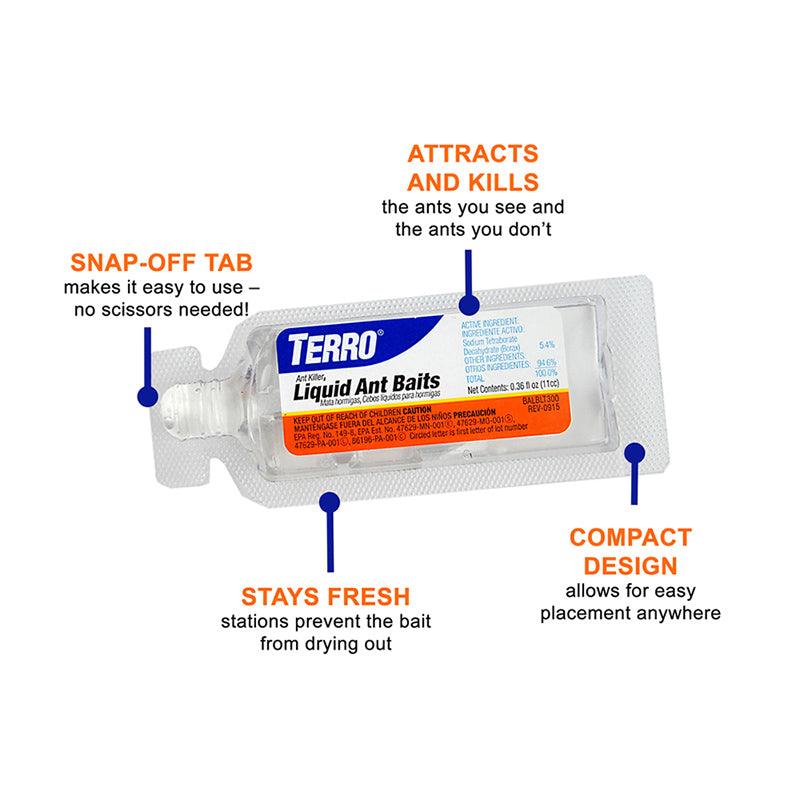To use an ant bait station, twist the tab to open station for ants to access bait easily. Proper placement is crucial for effective baiting.
When using ant bait stations, make sure to locate areas where ants are active for optimal results. Placing bait stations along ant trails or near entry points can help target the ants effectively. Remember that patience is key, as it may take some time for the bait to work and eliminate the ant colony.
By following these steps, you can effectively use ant bait stations to control ant infestations in your home.
Choosing The Right Ant Bait Station
One of the most crucial steps in effectively dealing with an ant infestation is choosing the right ant bait station. Ant bait stations are designed to attract ants and eliminate them by introducing a toxic bait that the ants carry back to their colony. But with so many options available in the market, it can be overwhelming to select the most suitable one for your needs. To help you make an informed decision, let’s explore the different types of ant bait stations and the factors to consider when selecting one.
Understanding Different Types Of Ant Bait Stations
Ant bait stations come in various forms, each with its unique advantages. It’s essential to understand the different types to choose the one that aligns with your requirements:
- Gel Bait Stations: These ant bait stations contain a gel-based bait that attracts ants. Gel bait stations are convenient to use and can be placed in various locations, including corners, cracks, and crevices.
- Liquid Bait Stations: These bait stations are designed to hold liquid ant bait. They often come with tamper-proof caps to prevent spills and ensure the bait remains secure inside.
- Bait Stations with Granules: These ant bait stations house granular baits that are attractive to ants. The granules are formulated to mimic natural ant food sources, enticing the ants to consume them.
Factors To Consider When Selecting Ant Bait Stations
When choosing an ant bait station, there are several factors you should consider to ensure effectiveness. These factors include:
- Ant Species: Different species of ants have varying food preferences. It’s essential to identify the ant species infesting your property to select a bait station with a bait that specifically attracts them.
- Indoor or Outdoor Use: Some ant bait stations are designed for indoor use, while others are suitable for outdoor use. Consider the location of the ant infestation and choose a bait station accordingly.
- Pet and Child-Friendly: If you have pets or children, it’s crucial to select ant bait stations that are safe and non-toxic to avoid any potential harm. Look for bait stations with child-resistant features or those made with pet-friendly ingredients.
- Bait Duration: The length of time the bait remains effective can vary between different ant bait stations. Consider the duration of the bait’s effectiveness and choose one that suits the intensity of the infestation.
- Easy to Use: Opt for ant bait stations that are easy to use and set up. Look for features such as pre-filled bait stations or easy-to-open designs, ensuring a hassle-free experience.
By considering these factors and understanding the different types of ant bait stations available, you can choose the one that best suits your needs and effectively eliminate the ant infestation in your home or business.
Placing The Ant Bait Station
When it comes to effectively addressing ant problems in your home, placing the ant bait stations in strategic locations plays a crucial role. Identifying the right spots and following some key tips can significantly enhance the success of your ant control efforts.
Identifying Strategic Placement Locations
- Locate areas where ants are frequently seen trailing to identify high-traffic zones.
- Place bait stations near entry points, such as doors, windows, and cracks, to intercept ants.
- Target areas near moisture sources like sinks, pipes, and bathrooms as ants are attracted to water.
- Avoid placing stations near repellent sprays or harsh cleaning agents that may deter ants from the bait.
Tips For Effective Placement
- Ensure bait stations are positioned along ant trails for maximum exposure to the colony.
- Place stations on flat surfaces where ants can easily access them, avoiding uneven or sloping areas.
- Maintain a distance of 1-2 feet between bait stations to cover a wider area and target different ant foraging paths.
- Regularly monitor and replace bait as needed to maintain its attractiveness and effectiveness against the ant infestation.
Using The Ant Bait Station
To effectively use an ant bait station, start by twisting the new and improved tab to open the station for ants to access the bait. Next, place the entire bait station in areas where ant activity is observed, allowing the ants to feed on the bait and return it to the nest for the most effective results.
Activating The Bait Station
Twist the new and improved tab on the bait station vertically to open and provide access to the bait for ants.
Monitoring And Maintenance
Regularly check the bait station to ensure there is a steady supply of bait and that it is still effective in attracting ants. Refill bait as needed.

Credit: www.lowes.com
Effectiveness And Troubleshooting
One of the key steps in managing ant infestations is assessing the effectiveness of ant bait stations. These stations are designed to attract ants to the bait and eliminate the entire colony. However, it’s important to monitor the progress and make sure the bait is doing its job.
Here are a few ways to assess the effectiveness of ant bait stations:
- Observe ant activity: Keep an eye on the bait stations to see if there is any ant activity around them. If you notice a decrease in ants or if there is a steady stream of ants going into the stations, it indicates that the bait is working.
- Check for bait consumption: Inspect the bait stations regularly to see if the ants are consuming the bait. An empty or partially consumed bait station suggests that the ants are actively feeding on the bait.
- Monitor ant population: Take note of the overall ant population in your home or yard. If you see a decline in the number of ants over time, it means that the bait is having an impact on the colony.
| Signs of Effectiveness | Signs of Ineffectiveness |
|---|---|
| Decrease in ant activity | No change in ant activity |
| Empty or partially consumed bait stations | Full or untouched bait stations |
| Decline in overall ant population | No change in ant population |
While ant bait stations are generally effective, there can be some common issues and challenges that you might encounter. It’s important to address these problems to ensure the success of your baiting efforts. Here are a few common issues and their solutions:
- Poor ant attraction: If you find that ants are not being attracted to the bait stations, try placing them in areas where you have noticed high ant activity. Ants are more likely to discover the bait if it is located near their foraging trails or entry points.
- Interference from other food sources: Make sure to remove or minimize other food sources in the area, as they can be competing with the ant bait. Clean up any spills, crumbs, or other food residues to increase the attractiveness of the bait stations.
- Placement issues: Proper placement of ant bait stations is crucial for their effectiveness. Ensure that the stations are placed along ant trails or near entry points, allowing ants easy access to the bait.
By addressing these common issues and challenges, you can enhance the effectiveness of your ant bait stations and achieve better results in eliminating ant infestations.
Enhancing Ant Control Strategies
One effective strategy for enhancing ant control is to combine ant bait stations with other control methods. By placing bait stations strategically, you can target ant colonies and disrupt their population. Incorporating baits with other control measures can lead to a more comprehensive approach to ant infestation.
Implementing long-term preventive measures is crucial for successful ant control. Regular sanitation and proper waste management can help reduce ant attractants. Sealing entry points and minimizing moisture sources in and around the property can also prevent ant infestations from reoccurring.
Additionally, maintaining landscaping and eliminating standing water can contribute to long-term ant control. It’s essential to address conducive conditions that may attract ants and take proactive steps to prevent future infestations.

Credit: www.kness.com

Credit: www.groworganic.com
Frequently Asked Questions On How To Use Ant Bait Station
How Do You Use An Ant Stop Bait Station?
To use an ant stop bait station, hold it vertically and twist the tab to open it. This allows ants to access the bait. Place the entire station near where you have seen ants. Bait stations may take a week or more to work, as the ants need to return to their nest with the bait.
How Long Do Bait Stations Take To Work For Ants?
Bait stations for ants may take about a week to be effective in controlling ant infestations.
How Do You Place An Ant Bait Station?
To place an ant bait station, simply open the station by twisting the tab for ant access. Position the station where ants are active, ensuring they can reach it easily.
Do Ant Bait Stations Work?
Ant bait stations can be effective in controlling ants, although they may not work immediately. Most ant baits are slow-acting and require ants to return to the nest with the bait to feed other colony members, including the queen. It’s important to allow ants to access the bait by opening the station and placing it in areas where ant activity is present.
Successful baiting may take a week or more to eliminate ants.
Conclusion
To effectively use ant bait stations, start by opening the station and allowing ants to access the bait. Place the station in areas where you have seen ant activity. Keep in mind that most ant baits are slow-acting, so it may take some time to see results.
Successful baiting involves the ants returning to the nest and sharing the bait with other colony members. Remember to be patient and consistent with the placement of the bait stations for the best results in eliminating ants from your home.

I’m MD Tanvir, and I bring years of expertise gained from working closely with pest control companies to the forefront. My journey in the industry has inspired me to launch Bug Battler, a platform aimed at equipping people with the know-how to combat pests autonomously. Through Bug Battler, I aim to empower individuals with practical insights to tackle pest infestations effectively.

